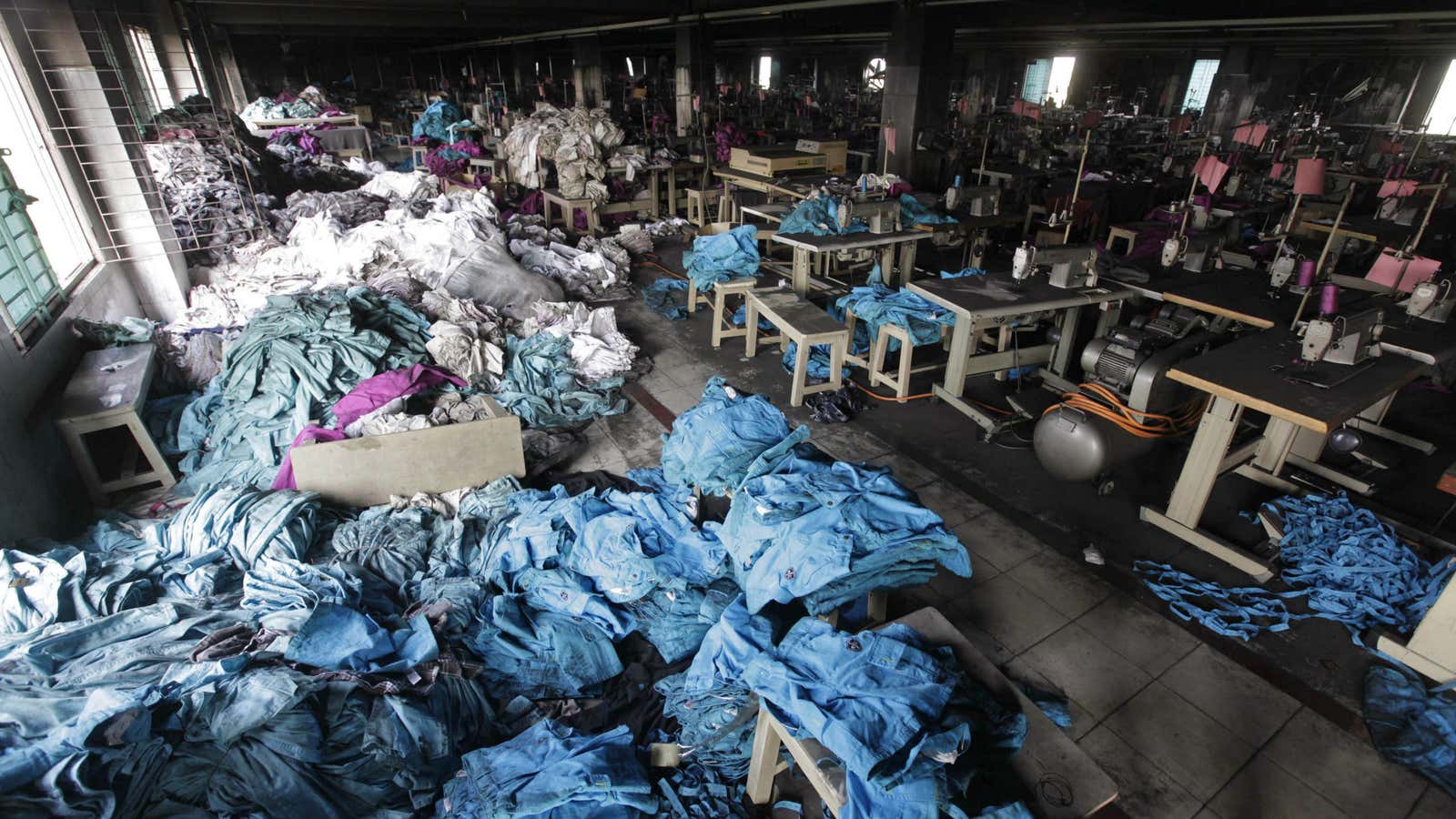From the 1900s to 1950s, American consumers spent approximately 12-14% of their annual income on clothing. Today, we spend about 3%. But our closets are actually bigger. The average American house has doubled in size since the 1950s and closet space has increased, too, particularly with the advent of the walk-in closet in the 1980s. We likely have more than five times as many clothing items as we did in the first part of the 20th century. The move of clothing production overseas where labor costs are low has made it possible for us to have large quantities of items without paying much for them. But this could be changing.
Much like several other consumer product categories, the price of clothing is looking to go up, yet the quality we currently see will remain the same. Forecasts continue to predict rising costs of production, increased compliance costs, and not many options for meeting quality standards beyond China and other countries that currently produce clothing. Raw materials will cost more, wages for workers will go up, and the infrastructure needed to produce items at the right quality standards will be costly—all of which will be passed on to the consumer. At this point, the primary concern for manufacturers and retailers is rising labor costs. In China, manufacturing wages have increased by 71% since 2008 and are projected to rise by 10% this year. Manufacturers are searching for other production locations with cheaper labor, but wages are rising in those countries as well. For instance, the minimum wage is Bangladesh has risen by 77% as a result of much debate following the tragic Rana Plaza factory collapse on April 24, 2013, and Indonesian unions recently staged a strike in demand of a 30% wage increase. As reported by the Sourcing Journal Online, clothing costs will rise in the coming years, maybe not dramatically but the upward trajectory is eminent.
While low-cost “fast fashion” appeals to the consumer wallet, more consumers now associate low-cost clothing with the ethical issues of low wages, poor working conditions, and excessive environmental waste. Some retailers are trying debunk these negative associations. H&M, which is known for being a low-price, fast fashion retailer, is increasing its focus on sustainability, per consumer interest. As reported on The Business of Fashion, H&M is considering production in sub-Saharan Africa, plans to source more sustainable raw materials, and in the coming months will feature a denim collection made from recycled materials and organic cotton. These sound like good ideas but will they actually work or simply assuage the minds of worried consumers?
So what should shoppers do when faced with rising costs and the ethical dilemmas of cheap clothing?
One option is to reconsider our approach to clothing by taking a cue from Europeans who have historically been more more focused on quality rather than quantity. Much of the cheap clothing we consume in droves is like our fast food diets—high in calories (quantity) but low in nutrition (quality). We are a culture that buys a lot of junk. Think about your own wardrobe—consider how many items of clothing you own and how often you wear each of those items. My guess is that most of us wear about 20% of our clothing 80% of the time. That is a lot of wasted space and wasted money.
The average American household has a median annual income of approximately $50,000. If it spends 3% of their income on clothing, they’ll have $1,500 a year, or $125 per month to spend. Instead of buying five fast-fashion, low-quality items costing $25 each, they could invest in one or two quality items at a higher price point ($125 or $63 respectively).
By doing so, they will have less to dispose of or donate to charity later.
In her book, Over-Dressed: The Shockingly High Cost of Cheap Fashion, Elizabeth Cline describes our current disposable fashion culture and the path our unwanted, and often unused, clothing takes when we donate it to charity. More awareness of the ethical issues related to this disposable fashion culture are coming to the forefront with the increasing momentum of the slow-fashion movement and the development of organizations like the Ethical Fashion Forum, which aims to support and promote sustainable fashion practices related to the social and environmental practices within the fashion industry.
Ultimately though, will we change our ways? Despite our growing ethical concerns, we are likely to make more drastic changes in how we buy when price ultimately becomes a factor. But we should consider how all the cheap clothing we buy may be indirectly costing us much more than we realize.
